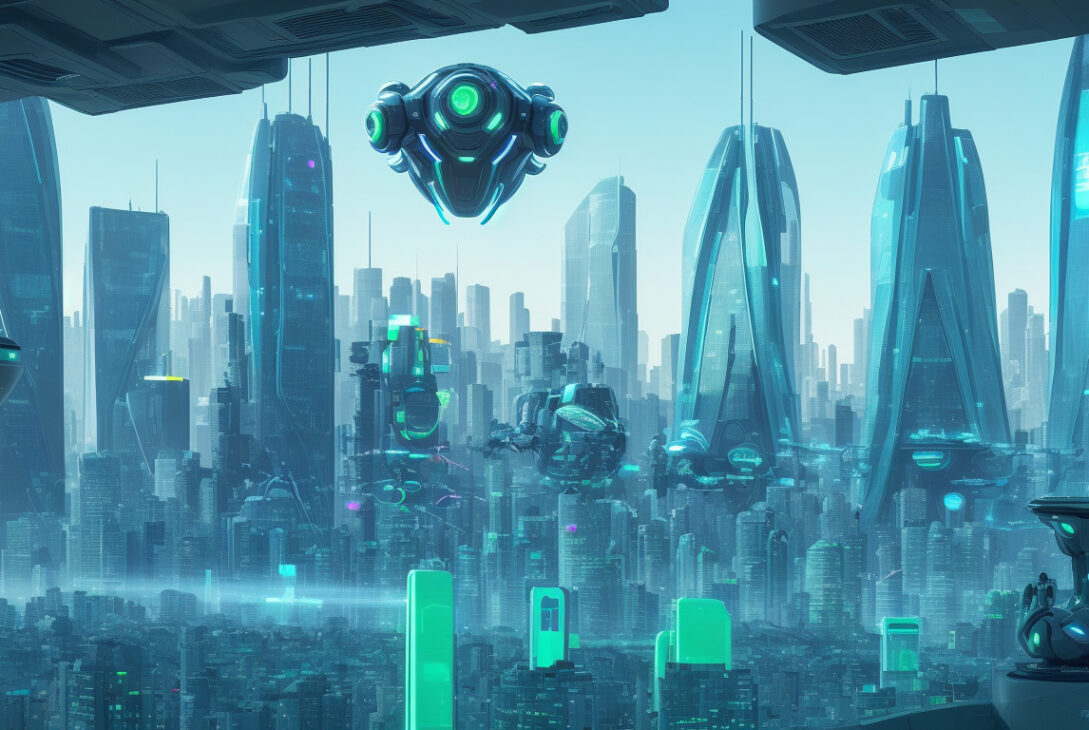Working with Agentic AI and Its Potential Risks: Insights from Fujitsu Technology and Service Vision 2025
Published on September 1, 2025 | Approximate reading time: 4 minutes
In the evolving landscape of artificial intelligence, Fujitsu envisions a future where agentic AI — autonomous AI systems capable of making decisions and performing tasks independently — becomes an integral part of daily life. This transformative concept is central to Fujitsu’s Technology and Service Vision 2025, which explores how collaboration between humans and AI could enhance creativity and productivity while also addressing emergent risks tied to AI’s proliferation.
The Future of Work: Humans and AI Collaborating as Partners
Fujitsu’s vision portrays a near-future scenario at an imagined company, Biomaterial, where Lee, a project lead developing advanced clothing materials, works closely with his AI assistant, Nova. Nova supports Lee by autonomously performing complex tasks such as conducting patent research and preparing documentation, thereby freeing Lee to focus on more innovative, creative endeavors.
“AI remains a tool we use — but it’s becoming a far more powerful and accessible one,” explains Hiroshi Nishikawa, Senior Director of the Technology Marketing Strategy Division at Fujitsu. “In our vision, AI transcends the role of a mere tool. It becomes a trusted partner, almost like ‘Another Me.’”
Fujitsu is at the forefront of developing agentic AI, with deployed AI agents already capable of supporting autonomous actions. Examples include AI agents that dynamically assist in meetings by suggesting relevant information based on ongoing conversations and legal support agents that analyze documents, construct databases, and flag potential risks.
Nishikawa elaborates, “Currently, few AI agents can operate fully autonomously, but in the near future, AI will not only assess and provide recommendations on demand but will also interact and collaborate with other AI agents. This synergy will enable AI to shoulder a significant portion of routine tasks, leaving humans to concentrate on higher-level, creative work.”
Recognizing the Challenges: Social Division and Energy Consumption
Despite the promising potential, Fujitsu acknowledges prevailing concerns regarding AI’s rapid expansion. A recent survey conducted in February 2025 by research firm Frost & Sullivan on behalf of Fujitsu involved 800 business executives across 15 countries, revealing widespread apprehension:
- 68% of respondents believe that AI-generated misinformation and bias may exacerbate social divisions.
- 69% are concerned about the environmental impact stemming from increased electricity usage tied to AI technologies.
“We understand the strong sense of urgency around AI’s evolution,” Nishikawa notes. “There are valid worries about job displacement and the disruption of traditional industries. Our vision carefully addresses both the opportunities and the potential downsides of AI to foster balanced awareness.”
From an environmental perspective, the International Energy Agency reports that if AI integration expands to the scale of major search engines like Google, the electricity consumption of AI-powered data centers could grow tenfold. For context, an average Google search consumes approximately 0.3 watt-hours, whereas a single request to AI models such as OpenAI’s ChatGPT requires an estimated 2.9 watt-hours. With billions of requests daily, this translates to an estimated additional 10 terawatt-hours of electricity annually.
Addressing Risks and Embracing New Opportunities
Mitigating these risks, particularly around energy consumption, is a priority at Fujitsu. Nishikawa emphasizes the importance of creating high-performance AI systems that are energy-efficient. “We are investing heavily in developing low-power CPUs and more efficient GPUs to reduce AI’s energy footprint. Tackling these challenges is not only responsible but opens up new market opportunities.”
Continuing the optimistic narrative from the Biomaterial company, the article imagines an AI-enabled ecosystem where farmers, logistics providers, energy firms, researchers, and other stakeholders collaboratively share data and AI-driven insights to develop plant-based biomass materials. This interconnected model demonstrates how AI agents can facilitate cross-industry collaboration, driving innovation that benefits society sustainably.
“Our core message is unchanged: technology, when thoughtfully developed and integrated, can help build a more prosperous and equitable future,” Nishikawa concludes. Fujitsu aims to inspire organizations worldwide to take thoughtful, proactive steps toward realizing their purpose through AI and technology.
About the Author
Hiroshi Nishikawa is Senior Director of the Technology Marketing Strategy Division at Fujitsu Limited’s Technology Strategy Unit. Leading the Fujitsu Technology and Service Vision initiative since 2014, Nishikawa brings broad experience spanning telecommunications equipment development, global server alliances, and European mergers & acquisitions. He holds an MBA from the Stephen M. Ross School of Business and a master’s degree in physics from Osaka University.
Additional Resources
- Download the full Fujitsu Technology and Service Vision 2025 for a detailed exploration of AI’s role in creating a net positive future: [Fujitsu Technology and Service Vision 2025 PDF]
- Read about Fujitsu’s ongoing efforts to reduce AI energy consumption: Addressing AI’s Power Consumption Challenges: Fujitsu’s Three Energy-Saving Technologies
- Learn about Fujitsu’s perspective on AI-driven business transformation and societal value creation through sustainable, trusted management.
Fujitsu remains committed to advancing human-centric AI innovations that expand possibilities while responsibly managing the accompanying challenges.
For more information, visit Fujitsu’s Global Newsroom and Technology Vision pages.










